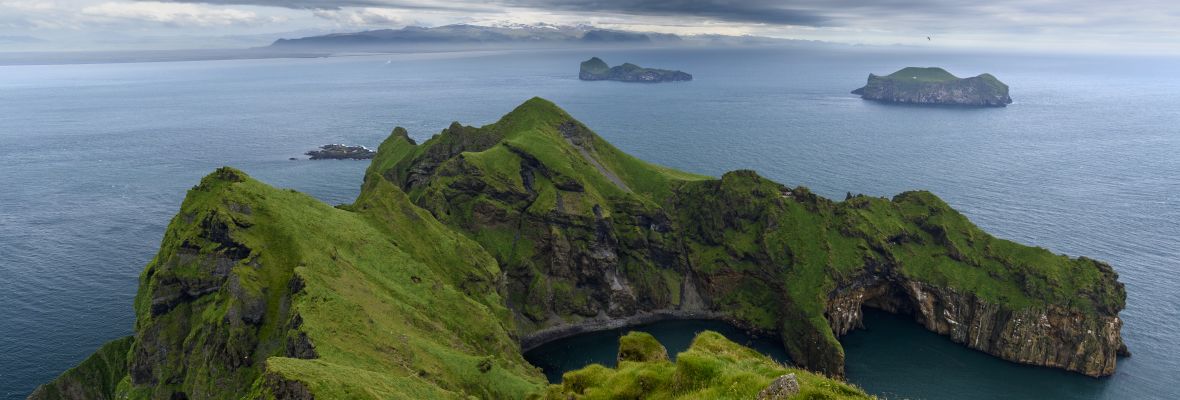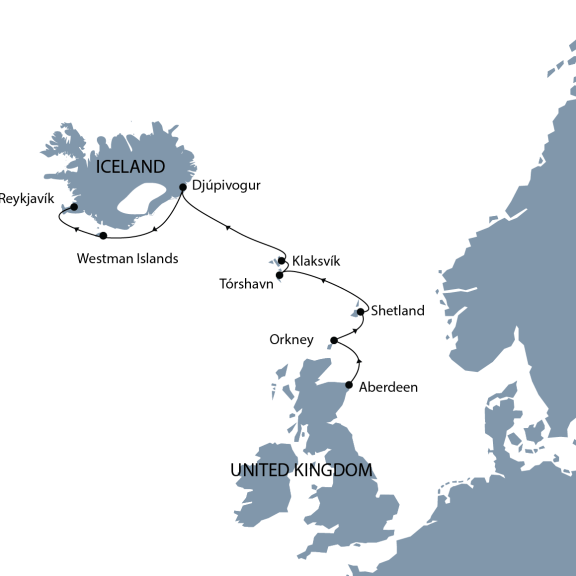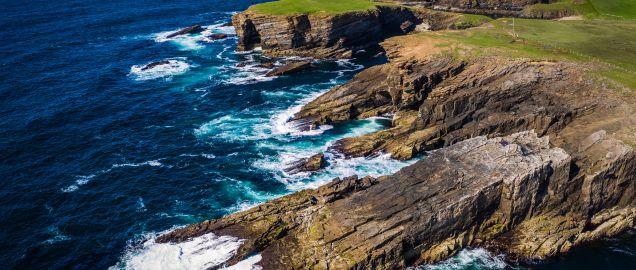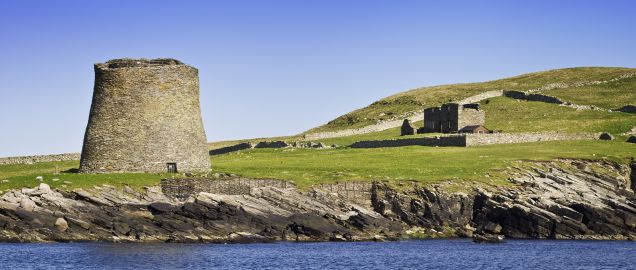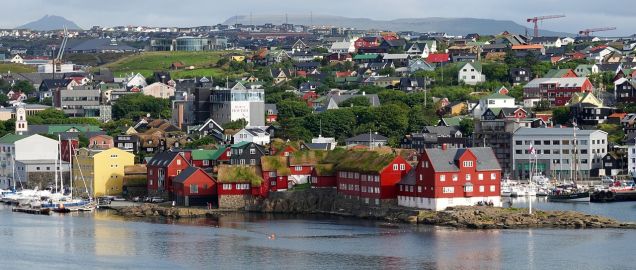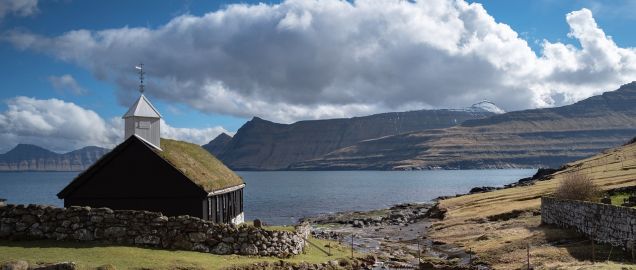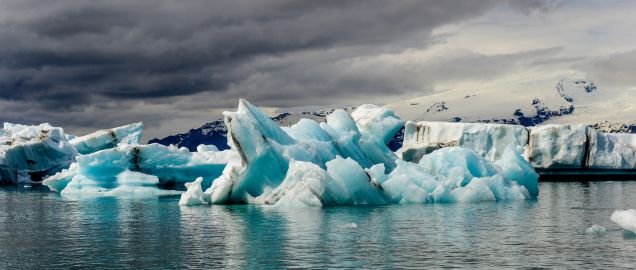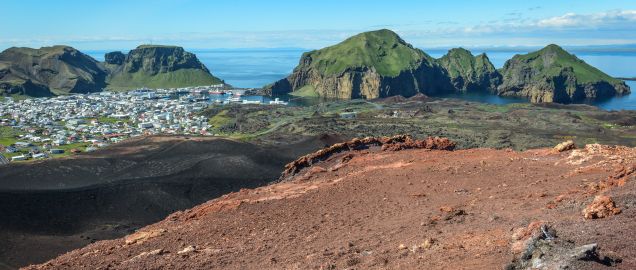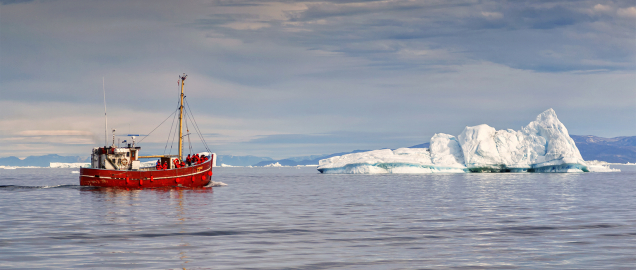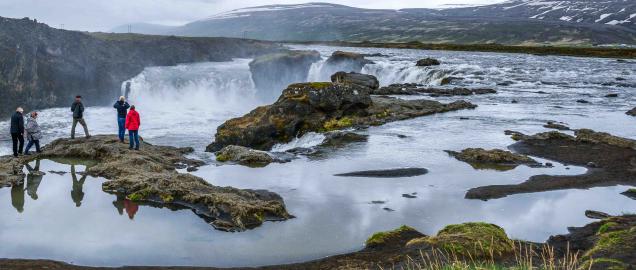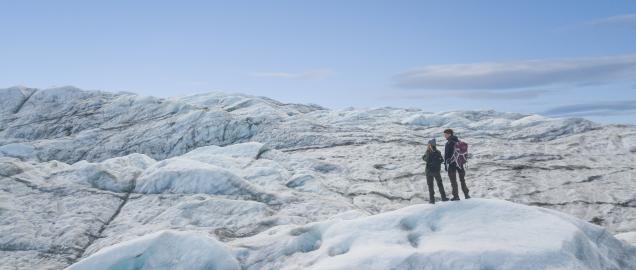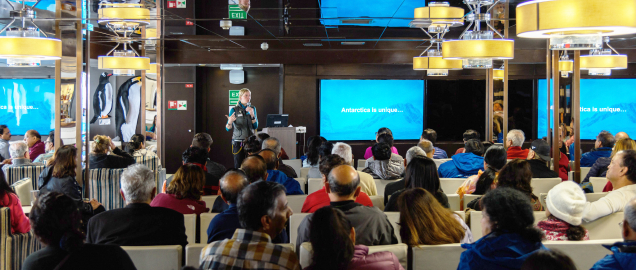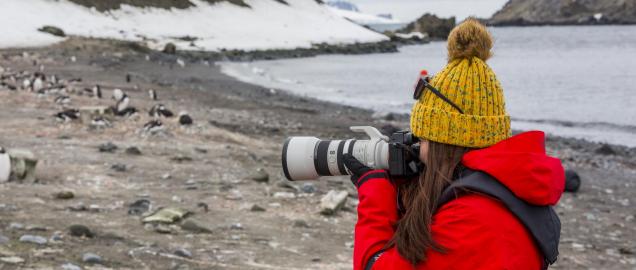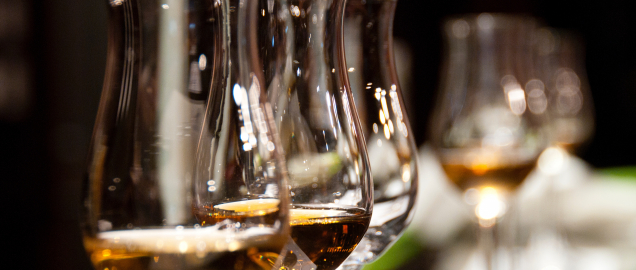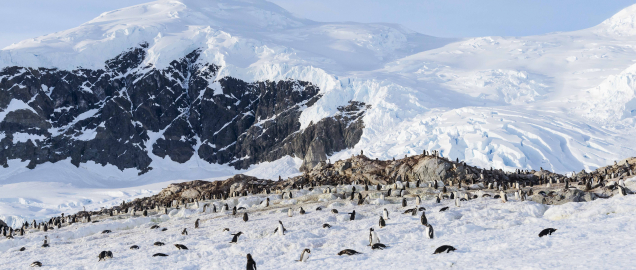Through the North Atlantic
Next DepartureMay. 28, 2024See all departures |
Duration9 daysSee the itinerary |
Activities
, Boat, Bus Excursion, Lectures, Photography, Tastings, Trekking, Wildlife observations, Zodiac |
There are few wilder, more magnificent and untouched places than the islands of the North Atlantic! And no ships more suited than Ocean Albatros for such a voyage. On this adventure, we cover wondrous islands in Scotland, the Faroe Islands, and Iceland.
Cruising from Scotland to the lush green islands of Orkney, Shetland, the Faroe Islands, and Iceland, this nine-day springtime adventure delivers fair-lighted days and matchless landscapes and seascapes. Our journey begins in Aberdeen, Scotland's Granite City, where we embark on Albatros Expeditions’ modern vessel Ocean Albatros, our home for the next 9 days. Migrating birds, dolphins, and whales are only some of the sights we expect in this cruise.
Departing the bustling port of Aberdeen, our first stop is Kirkwall, the fascinating capital of Orkney, an archipelago known for its sandstone cliffs and its plethora of ancient Neolithic sites (as well as some of Scotland's northernmost distilleries). Next up is the Shetland Islands, with the cozy town of Lerwick and later a stop at the Isle of Noss - a small isle hosting one of the largest and most spectacular mixed-species bird colonies in the UK. We sail further north to the fabled Faroe Islands, where Tórshavn, its capital and largest town, awaits us. Explore this small but perfectly formed capital, famous for its ancient Norse heritage and its beautifully preserved turf-roofed buildings. We follow the Faroe Islands rugged coasts further and make a call at Klaksvik, the Faroes' second largest town, a picturesque settlement nestled in a deep bay, and the ideal location from which to explore the stunning natural surroundings of the islands.
After these days full of culture, history, whiskies, and bird life, it’s time to head out across the North Atlantic and scout for whales and wildlife as we approach Iceland. Our first port of call is Djúpivogur, a small town and municipality located amid staggering natural beauty on the southeastern coast of the country. From Djúpivogur, we will cruise past the volcanic island of Surtsey, a UNESCO World Heritage Site and the youngest island in the world, before spending an exciting day in Heimaey, the largest island of the Vestmannaeyjar archipelago. Heimaey is the site of one of Iceland's best known volcanic eruption, when locals armed with little more than hoses managed to save their town from imminent destruction. Departing Heimaey, we will set a course for our final destination, the Icelandic capital of Reykjavík.
Witness the majesty and grandeur of the North Atlantic onboard Ocean Albatros. Experience with us!
Facts about Through the North Atlantic
- Arctic
- Iceland
- Scotland
- Europe
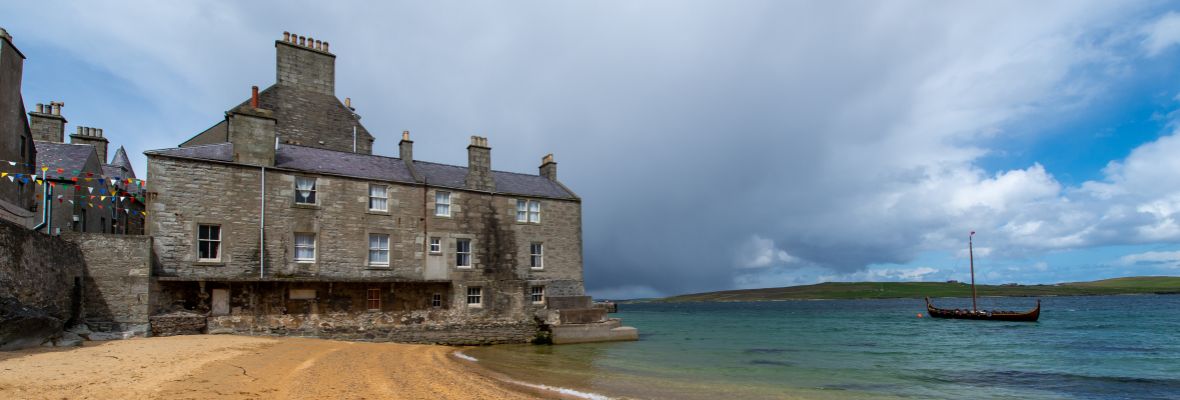
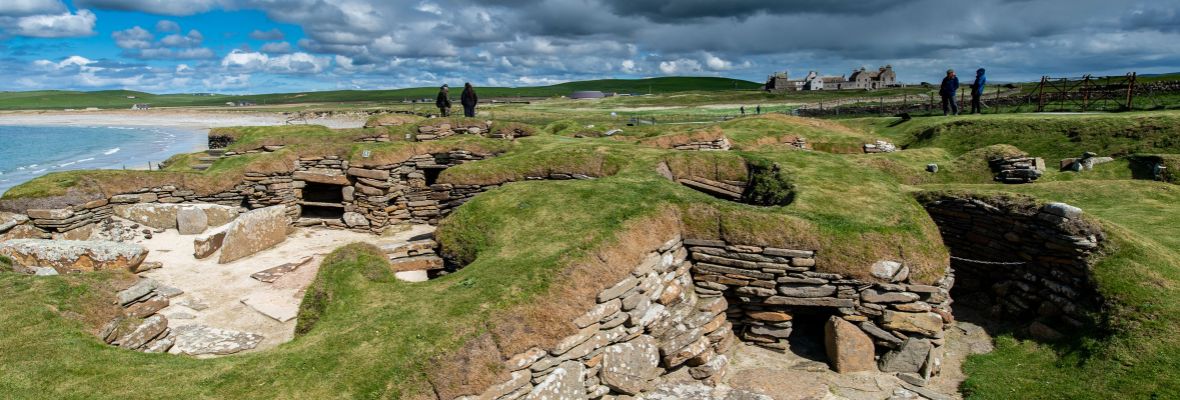
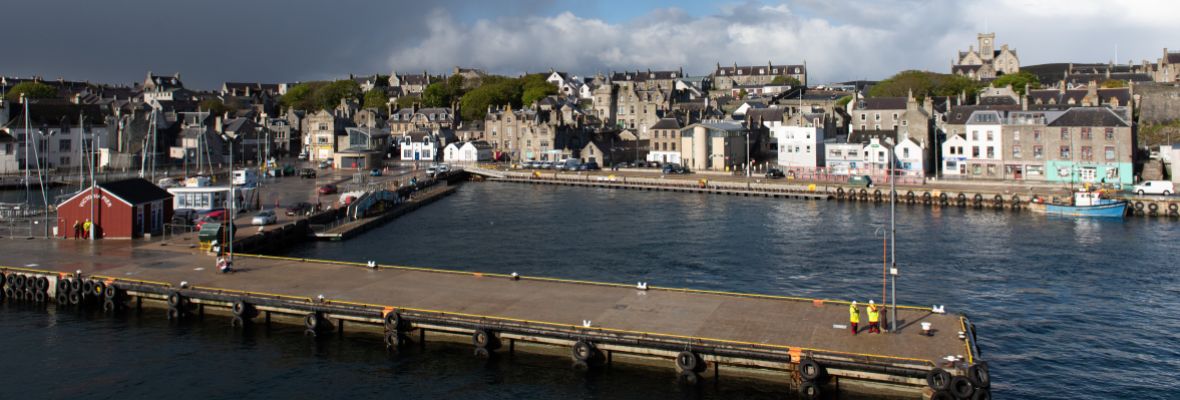
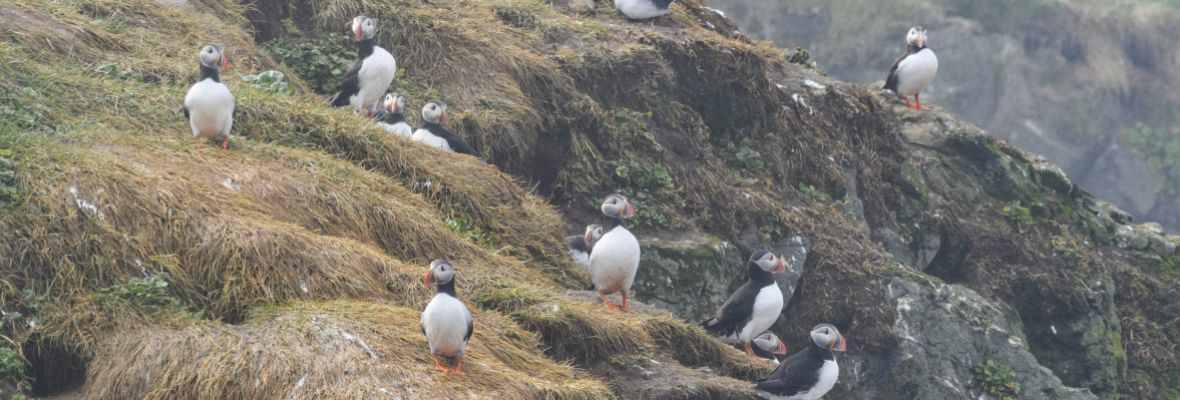
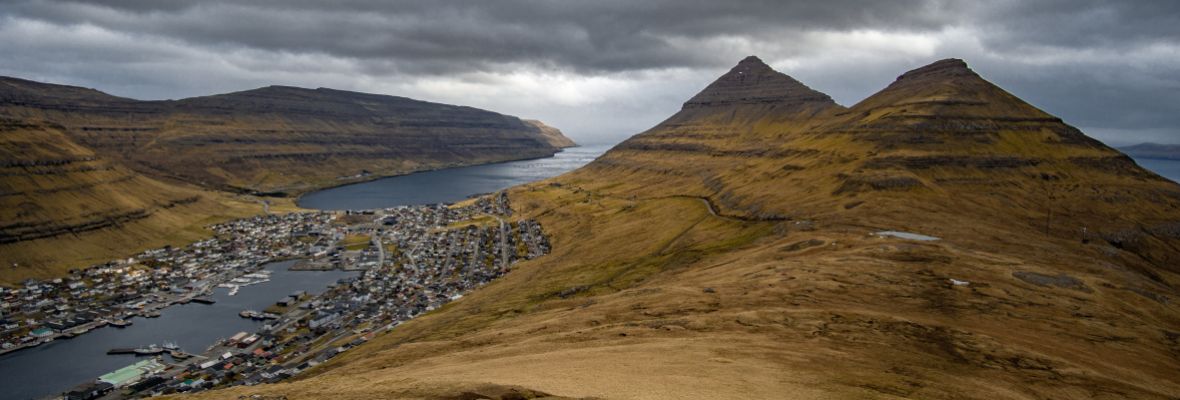
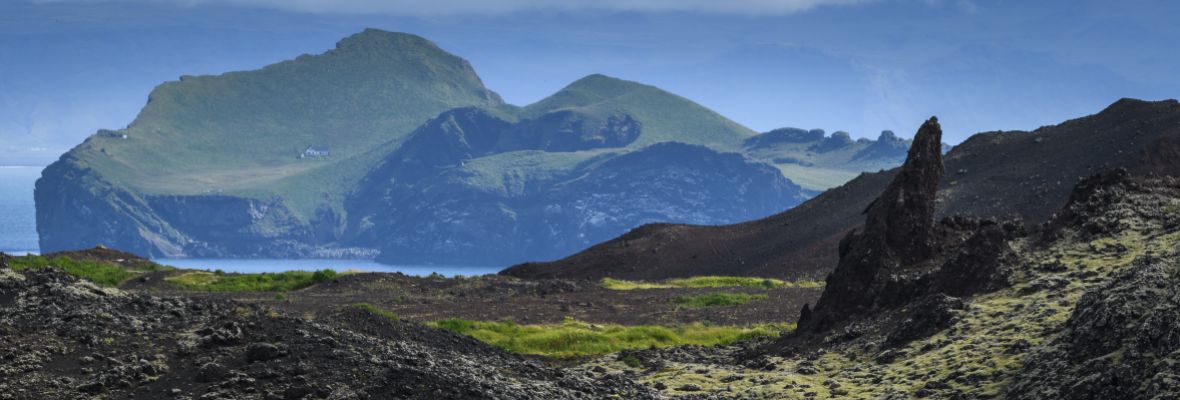
Day 1
Aberdeen - Embarkation
Our journey begins in Aberdeen, Scotland's famous Granite City. The city of Aberdeen is one of the wealthiest in the UK with a long and illustrious history. The modern city grew out of a rich fishing and shipbuilding tradition, and has since become the UK's main port serving the oil and gas industry. The glittering granite buildings for which the city is nicknamed demonstrate the prestige and power of northern Scotland's economic hub.
MV Ocean Albatros awaits embarkation in the city's bustling harbour, with comfortable staterooms ready to welcome our guests. After our mandatory safety briefings and lifeboat drill, Ocean Albatros will sail out of Aberdeen and chart a course for the ancient Isles of Orkney.
Day 2
Kirkwall, Orkney
During the night we will sail along the northeast coast of Scotland to arrive at the town of Kirkwall capital of windy Orkney off the mainland of Scotland. Orkney is old Norse for the "seal islands", and like many other North Atlantic islands, Orkney has a rich Viking story.
Orkney has a fascinating history, and contains one of the highest concentrations of Neolithic remains anywhere in the world, preserved in the islands' softly blowing sands. These sites range from the dramatic stone circle of Brodgar to the touchingly intimate Neolithic houses of Skara Brae, preserved so perfectly they could almost still be inhabited. Unlike the Scottish mainland, Orkney and nearby Shetland were colonised by Norse settlers, and were a part of the Kingdom of Norway until the late 1400s; the islands' language, culture and architecture is subsequently distinct to the rest of Scotland. Locals are proud of their Nordic heritage, which is evident almost everywhere you go in the city, from the magnificent St Magnus' Cathedral (the founding of which is detailed in bloody sagas; it is also one of the only churches in the world to have its own dungeon), to street names, to the world-renowned Highland Park distillery.
More recently, the islands were of huge military importance to the British state, and an entire German fleet lies scuttled at the bottom of Scapa Flow, just outside the city. The barricades between several of the islands were constructed after a daring U-Boat raid in the Second World War. Along with the magnificent Italian Chapel (built by Italian prisoners of war), the barricades bear testament to the islands' complex military history.
Today, the islands have again reinvented themselves; visitors are warmly welcomed, and the bustling port is littered with equipment and parts devoted to tidal and wind power as Orkney seeks to capitalise on its abundant green energy.
Optional excursion: “Highlights of Orkney”:
We depart Kirkwall and head to the west of Mainland, Orkney’s largest island. Along the way we will pass through gentle rolling landscapes into the Neolithic Heartland of Orkney, an area designated as a World Heritage Site due to its wealth of pre-historic archaeological sites. Passing the Standing Stones of Stenness, we will stop at the 5000-year-old ceremonial circle: the Ring of Brodgar.
We continue to the pretty fishing village of Stromness. After a briefing and orientation, enjoy free time to explore the picturesque harbour and stroll along the quirky flag-stoned streets. Maybe visit the beautifully refurbished Pier Arts Centre with exhibitions by both local and international artists and relax with a hot beverage in a café or explore the craft shops selling local knitwear, pottery and art work.
Finally we return to the coach and continue our circular route following the coastline of Scapa Flow, the famous British Naval Base used in both World Wars.
(The excursion is part of the optional excursion package and not included in the price of the trip).
For guests wishing to stay in Kirkwall, a short walking city tour will be arranged, passing by St. Magnus Cathedral as well as the picturesque ruins of the Bishop's and Earl's Palaces.
Day 3
Lerwick and the Isle of Noss, Shetland
On the morning of the third day of our voyage, Ocean Albatros will arrive at Lerwick on the Mainland of Shetland. The Shetland Islands consist of over a hundred islands, of which only sixteen are inhabited year-round. The islands form the northernmost part of the United Kingdom, located approximately 300 km north of the Scottish mainland.
Like Orkney, the heritage of Shetland dates back to the Neolithic period, and Shetland was part of the Kingdom of Norway until the late 1400s; the Norn language, derived directly from Old Norse was spoken on the islands until the 1850s, peppering the placenames and slang of Shetland with Viking heritage. Norse connections are strong here, from the Shetland flag to the Up Helly Aa Fire Festival, held every year in midwinter. Modern Lerwick is a prosperous, bustling town, which thrives on the oil, gas and green energy industries, and increasingly on tourism. Enjoy a stroll through the town's busy high street, lined with independent shops selling local products, immerse yourself in history at the Shetland Museum and Archives, or watch the local ferries come and go from the busy harbourfront.
Optional excursion: "Clickimin Broch and Shetland sightseeing":
Once securely docked at the port, we depart on a short scenic drive through Lerwick towards Scalloway. From the elevated position we can enjoy the view of the charming village and the imposing Scalloway Castle. After a short photo stop, we continue eastwards through the area that is locally known as the “Black Gates” – an area where peat is still cut and used as fuel.
Following the road northwards, our main destination of Clickimin Broch is only a short drive. There will be free time to discover this well preserved and restored Broch and learn more about life in the Iron Age.
(Please note: The coach excursion is part of the optional excursion package and is not included in the price of the voyage).
Afterwards, we will return to Lerwick and after some time at leisure in the port town, we reboard around lunchtime.
During a delicious lunch onboard, our vessel repositions the short distance to the nearby Isle of Noss. Depending on the weather, we hope to be able to offer a Zodiac cruise beneath the bird cliff, one of the largest and most spectacular in Britain, thronging with gannets, guillemots and razorbills.
Day 4
Tórshavn, Faroe Islands
We arrive after lunch at Tórshavn, one of the smallest capitals in the world, ruling the scattered eighteen islands that make up the Faroes. An autonomous country within the Kingdom of Denmark, the Faroe Islands are situated roughly equidistant from Norway, Iceland and Scotland. 'Føroyar' (as the islands are locally known) is a corruption of the Old Norse roughly meaning 'Sheep Islands', hinting at the island's long sheep farming tradition and Norse roots. The local Faroese language is closely related to Icelandic and Old Norse, and indeed to the Norn language once spoken in Shetland and Orkney (with which the Faroes share ancient historical ties).
While not as cold as nearby Iceland, the Faroe Islands are nonetheless known for their challenging weather, largely due to their isolated location in the North Atlantic - here, the frigid sea rules life, and experiencing four seasons in the same day (or even hour!) is not uncommon. Nonetheless, their northerly location creates long light summer days, and while the weather is rarely warm, the climate is perfect for exploring!
Centred around the grass-roofed Parliament on Tinganes (one of the oldest in the world), Tórshavn - or simply 'Havn' as the locals call it - has a fascinating history. Originally a trading post established by Norwegian kings and operated as a monopoly by the Danish crown, Tórshavn was proclaimed a town in 1866 and has been the capital of the islands ever since. In the aftermath of British occupation during the Second World War, a narrowly contested referendum almost resulted in Faroese independence, after which the islands were granted autonomy.
Today, the Faroes operates as its own nation, excluding foreign affairs, defence and policing (which are handled by Denmark), and is a modern bustling city in miniature. Explore Skansin, the 16th century fort which found a modern use as the British garrison during WWII, experience Faroese culture at the Listasvn Føroya Art Museum, or shop for snuggly woollen goods in the city's many boutique shops. Explore the old Faroes in the city Cathedral, or the new Foroes in the architectural marvel of the Nordic House cultural centre. Alternately, unwind on a sunny terrace on Bryggjubakki (the waterfront area modelled on Copenhagen's famous Nyhavn) and indulge in a fresh local seafood lunch with a view of Tinganes- perhaps with a crisp local beer to match!
Optional excursion: Historical Kirkjubøur
By mid-morning you can participate in an optional bus excursion where we will try to look in history. We drive out of the capital and over the mountains to the south. As the climate on the Faroe Islands is ‘stably unstable’ it is not unlikely that we will drive through the cloud base and experience some fog on the way - though as the local saying goes: "don't like the weather? Wait ten minutes!" We soon arrive in Kirkjubøur, which was in medieval times the Episcopal capital of the Faroe Islands, and its undisputed cultural centre. We visit the ruins of the impressive Magnus Cathedral, and the St. Olav church – the only remaining medieval church on the Faroe Islands.
(The excursion is part of the excursion package and is not included in the price of the trip).
Upon our return to ‘Havn’ – as Tórshavn is often just called – you can go for a leisurely stroll through the old citadel near the harbour. A visit to the Art museum and the Nordic House is also very recommendable. With around 18,000 inhabitants it is the island nations largest. Torshavn is a wonderful mix of modern metropole and thousand year old traditions. The vast history is particularly visible in the old quarters of Tinganes, with its beautiful buildings with grass covered roofs and cobbled streets.
Day 5
Klaksvík, Faroe Islands. Optional excursion: Explore Eysturoy with Gjogv
During the morning we will arrive in the little port of Klaksvík on the island of Borðoy, located on the eastern side of this island nation. The town is the second largest in the Faroes with around 5,000 residents, with history dating back to Viking times. The town occupies the isthmus between two deep fjords, offering access to the sea on two sides - vital for the fishing industry which is still the basis of the town's economy.
Klaksik functions as the main hub for the northeastern part of the Faroe Islands, and as such offers a variety of services usually found in much larger towns. Subsea tunnels built into the basalt bedrock of the islands link Klaksvík to Esturoy and Stremoy (Tórshavn) opened in 2006, enhancing the town's economy and infrastructure hugely, allowing much easier export of catches. The town is particularly proud of its footballers - Klaksvík Football Club have defeated a number of much larger and better known European teams, and reached the third qualifying round of the Champions League - the first Faroese team to do so.
Optional excursion: Explore Eysturoy with Gjogv
Join an optional bus excursion where we explore the nearby island of Eysturoy with its wonderful nature, high peaks and wildlife. We depart by coach through a tunnel that connects Borðoy and Eysturoy and pass along the long Skalafjord. This leads us to the small harbour village of Gjogv, where we explore the area and maybe even walk the gorge that has given the village its name. We will have time to take some photos of some of the famous rock formations, cliffs and breathtaking views visible along our way. This roundtrip offers some insights of the Faroese lifestyle and the truly spectacular natural beauty that the islands hold. An excursion that lets us test the famous tagline for the country: Unspoiled, Unexplored, Unbelievable.
(The excursion is part of the excursion package and not included in the price of the trip).
Around lunchtime we leave Klaksvík and continue on our North Sea adventure towards Iceland.
Day 6
At sea, en route to Djúpivogur, Iceland
From Klaksvík, Ocean Albatros will head out across the North Atlantic towards eastern Iceland, following the course set by Norse explorers over a thousand years ago. Scholars still debate the origin of the first settlers of the Faroe Islands; whether the settlers were of Scandinavian or Norse-Irish origin, and whether they were preceded by Celtic settlers from Scotland and Ireland. What is certain is the islands were largely settled by around the year 800, after which Norse pioneers discovered and began to settle in Iceland.
Between the Faroe Islands and Iceland lies a submarine ridge, formed during the opening of the North Atlantic Ocean approximately 50 million years ago. This ridge causes the warmer Norwegian Current (a branch of the Gulf Stream) to rise towards the surface, enriching these chilly waters. Seabirds, seals and whales thrive in these nutritious waters, so keeping binoculars close at hand is highly recommended!
Days at sea are never dull. We will arrange a variety of activities onboard for our guests to enjoy to engage the mind, body and soul. Join your knowledgeable Expedition Team lecturers in the Theatre to hear specially-crafted lectures on local history, wildlife, geology, culture and more, unwind with a massage in the Albatros Polar Spa, or simply watch the seabirds gliding along the ship from our hot tubs as the Ocean Albatros flies across the North Atlantic towards Iceland.
Day 7
Djúpivogur, Iceland
Our first port of call in Iceland is the small, cozy port town of Djúpivogur. Located in East Iceland at the mouth of Berufjörður fjord, Djúpivogur is an enchanting village of just 456 inhabitants, standing beneath the dramatic Mount Búlandstindur, which reaches 1,069 m (3,510ft). Characterized by its calm lagoons, tranquil harbour, and flourishing bird population, particularly in the Búlandsnes Bird Sanctuary, the area allows visitors to enjoy an undisturbed natural paradise.
The town's harbour is perfectly is sheltered but still easily accessible from the ocean, and among the oldest in Iceland due to its Europe-facing position, with records dating back to 1589. The people of Djúpivogur take great pride in preserving their town's heritage, and the town attracts creative folk and artists from around the world. The public art exhibitions of the town worth a visit, not least the permanent Eggin í Gleðivík, 34 oversized granite bird eggs representing the 34 species which breed in the area. The artwork can be reached with a short stroll from the town centre. The Cultural Centre is located in the beautiful red timber house, Langabúð, and opposite this on the other side of the small harbor is the beautiful old Hótel Framtíð. Residents have embraced a slower way of life which we can hope to soak up whilst visiting.
Optional excursion: Vatnajökull, the largest icecap in Europe
We board coaches in Djupivogur and drive to the "lobster town" of Höfn where we make a short break after the first 60 minutes of driving. Our next stop is the breathtaking Hoffelslón lagoon at the outlet of the largest glacier in Europe (Vatnajökull), where we will take time to walk on the glacial moraine and enjoy the unique nature and spectacular scenery. The vast Vatnajökull glacier covers around 8% of Iceland's total land mass. After the visit we return towards Djupivogur, with some photo stops enroute.
(The excursion is part of the excursion package and is not included in the price of the trip).
After we embark our ship, we will sail along the southern coast of Iceland towards the Vestmannaeyjar archipelago.
Day 8
Heimaey and Surtsey, Vestmannaeyjar Archipelago, Iceland
The Vestmannaeyjar Archipelago (Anglicised as the Westman Islands) is a cluster of isolated islands situated off Iceland's southern coast. These rugged outposts have a surprisingly turbulent history, being the site of thrall rebellions during the Viking age, and the site of Ottoman slave raids in the 1600s. But the modern history of the town of Heimaey (the only settlement of any size on the islands) is what really puts the islands on the map. Heimaey made headlines worldwide in January 1973, when a volcano erupted on the island. Almost all of the 5,000 inhabitants evacuated, but some opted to stay, and armed with little more than hoses managed to cool and divert the worst of the lava away from the town and it's vitally important harbour.
Today, the cone-shaped hill of Eldfell (source of the 1973 eruption) looms over the town, a testament to the raw power of Icelandic nature. Heimaey is one of the few places where visitors can walk on a recent volcano, as well as on the extensive lavafield it left behind. Instead of forgetting or destroying the ruins left by the eruption, the enterprising islanders built a museum around them: the Eldheimar museum is one of the most fascinating in Iceland, showing in perfect detail the destruction even a comparatively tiny volcano can wreak.
While the lava-battling locals are known worldwide, many visitors come to see the island's other local residents; the millions of seabirds which nest on this isolated outpost. Approximately 1.1 million puffins nest in burrows in the turf and sandy soil of the island, while kittiwakes, fulmars, guillemots and razorbills also number in their thousands. Once a vital food source, locals are now fiercely protective of their feathered friends; local children even arrange patrols to collect and safely care of young birds which become disorientated at night, releasing them the following morning.
When you go sailing, you can see the islands' steep and grateful profiles in clear weather from a long distance. They are beautifully raised by the sea, and looking at them, one understands why an Icelandic poet would compare them with the sapphires in a silver ring.
We end the day by passing close to one of the world's newest islands, Surtsey. This volcanic island is named for a fire giant of Norse legend, and rose from the sea in 1963 during a submarine eruption. In 2008, Surtsey was inscribed on UNESCO's list of Natural World Heritage Sites. The island is closed to the public and only researchers are allowed - it is a vital means for scientists to understand how nature colonises newly formed islands - although the views of the island from the sea are spectacular.
An optional excursion: Guided tour of Heimaey; is available on this day. Please see below for details.
Day 9
Reykjavík, Iceland
The rock-like columns of Hallgrímskirkja Church loom over the city of Reykjavik, a hip Scandinavian capital which needs little introduction. With new Nordic cuisine, excellent shopping, fantastic excursions and an easy relaxed vibe, Reykjavik is one of Scandinavia's most welcoming and exciting cities. Such a bustling capital may feel strange after the remote wilderness of the North Atlantic!
After a hearty breakfast, it is time to bid a fond farewell to the Crew and Expedition Team of Ocean Albatros, and descend the gangway back to dry land with memories of the voyage of a lifetime.
Inclusions
- 9-day/8-night cruise on Ocean Albatros in a shared outside double room with a private bathroom in the category chosen
- English-speaking expedition staff
- Near-port walks with the expedition team
- Zodiac landings
- Information briefings and lectures by the expedition team
- Special photo workshop
- Full board on the ship
- Dinner drink package
- Free coffee, tea, and afternoon snacks on the ship
- Welcome and farewell cocktails
- Taxes, tariffs, and landing fees
- Digital visual journal link after the voyage, including voyage log, gallery, species list, and more
Exclusions
- International flights
- Extra excursions and activities not mentioned in the itinerary
- Single room supplement and cabin upgrades
- Meals not on board the ship
- Beverages (other than coffee and tea and dinner-drink package)
- Tips for the crew (we recommend USD 16 per person per day)
- Personal expenses
- Transfer to/from the ship
- Travel, cancellation, and senior insurance
- Anything not mentioned under ’Inclusions’
After leaving the bustling city of Aberdeen, your expedition vessel will set a northward course into the wild North Atlantic. The goal for the days spent exploring the region is to offer activities which will allow everyone to explore off the ship as much as possible, and experience the nature, settlements and culture of the North Atlantic in person.
Our activities will vary widely according to the nature of the locations we visit – some larger settlements need an entire day to explore, whereas some smaller villages and wildlife hotspots can be seen in a few hours. Activities we offer include landings (where a variety of excursions may be offered), Zodiac cruises and ship cruises. No matter the day’s planned activities, the onboard Expedition Team and Expedition Leader will work as hard as possible in conjunction with the Captain and Crew to maximize exploration opportunities.
A “typical” expedition day in the North Atlantic may look like this (subject to weather and sea conditions and sailing schedule):
- 06:45: Wake-up call
- 07:00-08:00: Breakfast
- 08:30-11:30: Morning activity – arrival in port at anchor, Zodiac ashore to explore settlements, historical sites etc. Depending on the location, we may spend the whole day in port.
- 12:30-13:30: Lunch onboard
- 14:30-17:30: Afternoon Activity – Either in connection with the morning, or at a different site, depending on itinerary
- 18:30-19:30: Evening Recap with Expedition Team
- 19:30: Dinner
Landings are a great opportunity to stretch your legs and set foot on shore to visit the towns and villages of Scotland, the Faroe Islands and Iceland, and experience Atlantic nature first-hand. Our experienced Expedition Team will be on shore to help you spot any wildlife, identify the different species of birds and mammals, guide you through settlements, as well as keep our guests safe on shore from any potential hazards.
We remind our guests that the North Atlantic is a truly wild destination, to consider their physical capability when travelling in the country. In smaller towns and villages, infrastructure for tourism may be less well developed than in other destinations. Most smaller towns and villages lack step-free access, and roads and paths can often be steep and uneven.
Some sites do not offer landing opportunities, but are locations where exploring on the water offers the best opportunities for sightseeing, wildlife and photography. These Zodiac cruise sites are often known for their excellent scenery, wildlife and even historical landmarks such as Celtic or ruins, where our fleet of Zodiacs offer the best vantage point. This would be the only scenario you may have to wait on the ship (other than in adverse weather conditions), but we will always aim to offer an onboard program during this time, such as seminars given by our knowledgeable and experienced Lecturer team. Zodiac cruises are great for observing seabirds, and other marine wildlife - your skilled driver will navigate around the area looking for wildlife and beautiful landscapes. By the end of the voyage, Zodiac cruises tend to become a firm favourite among our guests because of the vast diversity of scenery and marine life it is possible to experience.
In the event we encounter bad weather or are in a particularly spectacular location, often our purpose-built expedition vessels are the best viewing platform. The Captain and Expedition Leader will search for locations best accessed with the vessel to seek out the best wildlife and scenery. We encourage everyone to bundle up and either head onto the outer decks with the Expedition Team or relax in superlative comfort in our specially-designed lounges to experience the majesty of the North from the best vantage point. During this time, our Expedition Team specialists will offer skillfully-crafted lectures related to the wildlife, history, culture and conservation of the region, and more!
Other activities onboard include our ship Gym, where you can burn some calories on our fitness bicycles or treadmills; most of our ships even have other cardio machines and strength/lifting options. Our new purpose-built ships have a Spa, in which guests can enjoy massages, facials, and other relaxing treatments (additional cost applies). Our Library is a great place to rest between outings, with expansive views and a wide selection of reading material. During your voyage you will also be able to enjoy our tea time in the late afternoon, or indulge in some retail therapy in our onboard shop, which sells personal necessities as well as specially-selected souvenirs.
In between our landings and activities we offer three hearty daily main meals. Albatros Expeditions always have allergy flexible options, healthy selections as well as a variety of vegetarian and vegan options.
Our hardworking galley crew deliver multiple Breakfast options, served in a buffet style along with a cooking station where eggs are made to order. At Lunch we are also met with a smorgasbord of mouthwatering choices. Safe to say you will have the energy for your next outing!
When it is Dinner time, you can choose to eat at the main restaurant or book a table at the Specialty Restaurant. Your evening meal is served a la carte, with fresh new options daily and always a selection of fixed items. There is always a vegetarian and pescetarian option available. Albatros Expeditions are known for our delicious menus and a variety of exquisite wine pairings.
Onboard you will also have the option to join Afternoon Tea with sweets, cakes or snacks served each afternoon. Albatros Expeditions have tea and coffee freely available all day throughout the vessel, while specialty coffee, alcoholic beverages and hand-crafted cocktails are available at the ship’s bars.
Spring comes somewhat late to the North Atlantic region. In the mountains of Scotland, Iceland and the Faroe Islands, snow cover typically disappears by April, although it can sometimes be well into May before the grassy meadows which charecterise the lowlands begin to grow in earnest. Springtime in the North Atlantic region is typically wet and windy, but the rain stimulates plant growth, and the early summer wildflowers are one of the most beautiful sights in the region!
During April and May, the many seabirds which nest on the shores of the islands begin to come ashore for the breeding season. Puffins squabble over burrows and line their tunnels with soft grass atop the cliffs, while gannets, guillemots and razorbills compete for the best ledges. Over the course of a few weeks, empty cliffs quickly become crowded, and burst to life as seabirds lay their eggs - and larger birds such as Glaucous Gulls and Great Skuas attempt to devour eggs and chicks. The sheep, so essential to life in these cold wet regions, begin to give birth to lambs in April; by May, these adorable lambs can be seen frollicking from Scotland to the Faroes to Iceland, with each group of islands tending their own unique breeds.
By June, the brief North Atlantic summer is in full swing. Migratory ceteceans, including pilot whales, dolphins and larger baleen whales begin to arrive; some will remain in the area, while many more continue further north towards the Arctic Circle. Many of the seabird chicks have hatched by June, and are beginning to leave the nest, ready for a life at sea.
The North Atlantic region is synonymous with challenging weather. Unfortunately, warmth and sunshine does not spring to mind when one considers this wild region! Fortunately, the brutal reputation of North Atlantic weather abates somewhat in summer. While wild, wet and windy conditions do occur, bright sunny days are equally common.
Orkney, Shetland, the Faroe Islands and Iceland all have maritime climates heavily influenced by the surrounding North Atlantic. While these areas are generally cool and temperate, calm windless days can feel warm - even hot if you manage to escape the wind! However, the weather is highly changeable, and wind, rain and fog can occur without warning. As the saying in the region goes - 'if you don't lilke the weather, just wait ten minutes!'
We therefore remind our guests to be prepared for all weather conditions! We highly recommend to our guests to dress in layers (ideally in woolen or synthetic fibers) and a backpack so that layers can be adjusted as the weather dictates. Warm/waterproof layers, hats, waterproof gloves and scarves are recommended for all excursions off the vessel, even on the sunniest days – the weather can deteriorate rapidly at any time. Sun protection (hats, sunglasses, sunscreen and lip balm) is also essential – the low angle of the sun combined with cool ambient temperatures can cause sunburn to easily go unnoticed until it is too late!
Albatros Expedition strives to employ the very best Expedition Team in the whole industry. We travel in some of the planet’s most remote regions, where planning and on-location experience is key. Our routes and itineraries are subject to the prevailing sea, weather and wind conditions, which are closely monitored by the Bridge Team and Expedition Leader. Drawing on their vast experience, they find the best alternatives in the rare instances where our planned itinerary needs to be changed. Each cruise is a completely unique combination of locations, where the highlights can often be the totally unexpected. Most of our cruises provide the opportunity to spot a variety of unique wildlife, although this is subject to the whims of Mother Nature and can of course not be guaranteed. As you will no doubt experience, the joy from our Expedition Team when spotting different species on land or at sea is as genuine as your own.
This means that you as our guest are part of an adventure, a true expedition, where plans change, wildlife is encountered on their terms and your team consists of the very best experts within their fields. We strive to maintain a mix of specialists within relevant polar subjects including marine biology, ornithology, earth science, history and others. Albatros Expeditions boast a large number of Expedition Staff onboard, allowing us to maintain a high ratio of staff-to-guests at 1:8, amongst the highest ratios in expedition cruising. Some of our staff have decades of experience on ships or research stations, whilst others may be performing their first season. One thing they all have in common is the wish to make each and every journey a special and memorable experience for our guests. Knowledge, skill, and passion are the trademarks of all Albatros Expedition Staff.
To ensure the safety and quality of experience of our guests, please keep in mind that the itinerary and outdoor activities during each voyage are solely dependent on weather and sea conditions. Your safety is our highest priority. The route and shore landings will be determined by the Captain and Expedition Leader and communicated to guests through regularly scheduled briefings. Albatros Expeditions reserves the right to modify the landings and locations visited during a voyage based on local weather conditions and climate to ensure a safe and enjoyable experience for all our guests. Our voyages are expeditionary in nature, and thus changes to timings are commonplace due to the environment we operate in, as well as wildlife opportunities and locations.



